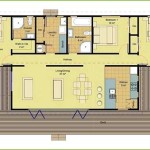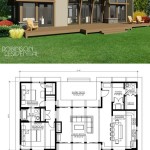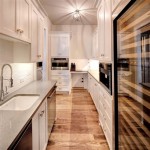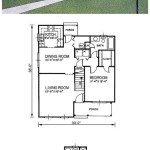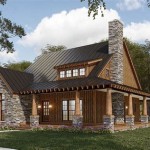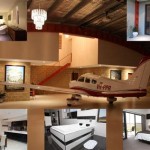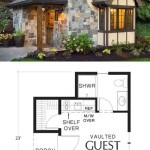Handicap-Accessible Tiny House Plans: Designing for Inclusivity and Comfort
The tiny house movement has gained significant traction, offering an alternative to traditional housing with a focus on minimalism and sustainability. However, designing a tiny house for individuals with disabilities presents unique challenges. Creating a space that is both compact and accessible requires careful consideration of universal design principles and specialized features. This article explores the essential aspects of handicap-accessible tiny house plans, showcasing how to incorporate accessibility into a small footprint without compromising comfort and functionality.
Universal Design Principles: The Foundation of Accessibility
Universal design, a concept rooted in inclusivity, emphasizes creating spaces and products usable by the broadest range of individuals possible. In the context of tiny house design, this means integrating features that cater to different abilities and needs. Key universal design principles include:
- Easy to Use: Controls, appliances, and fixtures should be intuitive and straightforward to operate for individuals with diverse physical abilities.
- Flexibility in Use: Designs should accommodate a range of preferences and adapt to changing needs over time.
- Simple and Intuitive Information: Clear and concise labeling, signage, and instructions are essential for easy navigation and understanding.
- Tolerance for Error: The design should minimize the potential for mistakes and provide feedback mechanisms to guide users.
- Low Physical Effort: Minimize the physical exertion required to access and use features.
- Appropriate Size and Space: Ensure adequate dimensions and clearances for maneuverability and comfortable use.
- Accessibility and Affordability: Design features should be accessible and affordable for all users.
These principles provide a framework for designing tiny houses that address the needs of individuals with diverse abilities, ensuring a comfortable and independent living experience.
Key Considerations for Handicap-Accessible Tiny House Plans
Beyond universal design principles, specific considerations are essential when designing handicap-accessible tiny houses. These include:
1. Wheelchair Accessibility:
- Wide Doorways and Hallways: Ensure doorways and hallways are at least 36 inches wide to allow for wheelchair access.
- Accessible Bathroom: Design a spacious bathroom with roll-in showers, grab bars, and a toilet with adequate clearance for wheelchair users.
- Lower Kitchen Counters and Sinks: Utilize adjustable countertops that can be lowered to accommodate wheelchair users.
- Ramp Access: Provide a ramp with a gentle slope for wheelchair access to the house entrance.
2. Visual and Auditory Impairments:
- Visual Cues: Incorporate contrasting colors and textures for easy identification of features and surfaces.
- Accessible Lighting: Prioritize ample natural light and provide sufficient artificial lighting for visibility.
- Auditory Signals: Integrate audible alerts for appliances, doorbells, and other devices to provide cues for individuals with visual impairments.
3. Cognitive Impairments:
- Simplified Designs: Eliminate unnecessary complexity in design and layout, making navigation and operation intuitive.
- Clear Signage and Labeling: Utilize clear and concise signage and labeling for easy understanding of features and controls.
- Organized Storage: Implement a well-organized storage system to prevent clutter and promote a sense of order.
Designing for Flexibility and Adaptability
Handicap-accessible tiny houses should be designed for flexibility and adaptability to accommodate changing needs over time. This can be achieved by incorporating features such as:
- Adjustable Height Countertops and Sinks: These versatile features adapt to users of varying heights and mobility.
- Universal Design Features: Utilize design elements that benefit a broad range of individuals, not just those with disabilities. This promotes inclusivity and reduces the stigma associated with accessible design.
- Open Floor Plans: Minimize interior barriers to create a more open and accessible space.
- Modular Design: Consider modular construction to easily modify the house layout as needs evolve.
By prioritizing accessibility and adaptability, handicap-accessible tiny house plans can provide a comfortable and independent living experience for individuals with diverse needs.

798 Sq Ft Wheelchair Accessible Small House Plans Tiny

The Tiny Guide To House Retirement Loft Floor Plans Accessible

Exclusive Wheelchair Accessible Cottage House Plan 871006nst Architectural Designs Plans

Exclusive Wheelchair Accessible Cottage House Plan 871006nst Architectural Designs Plans

Small Accessible Home House Plans Design

Wheelchair Accessible Small House Plans Drummond

5 Cute Wheelchair Accessible Tiny Homes You Ll Love

Wheelchair Accessible Small House Plans Drummond

Wheel Pad Accessible Tiny Homes Ability

Tiny House Revolution Accessible Susan Wheeler Hall
Related Posts

